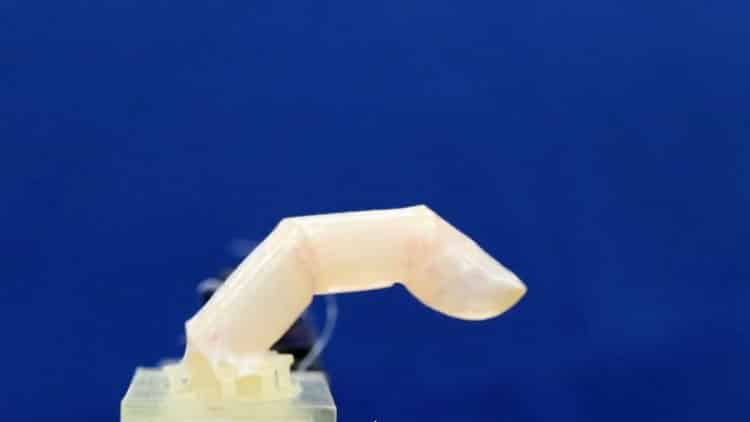Scientists craft living human skin for robots
Sat 11 Jun 2022
Skin has traditionally been reserved for animals, until now.
As per a new study, for the first time, scientists learned to grow humanlike skin on a robotic finger using cells.
Unlike artificial skin that is commonly used when building robots, this skin is alive, said lead study author Shoji Takeuchi, project professor in the department of mechanical and biofunctional systems at the Institute of Industrial Science at the University of Tokyo.
“Living skin is the ultimate solution to give robots the look and touch of living creatures,” Takeuchi said.
His research team chose a robotic finger for the experiment because this mechanism is well studied and a critical part of a robot, he said.
The humanlike skin is made using the same building blocks as human skin, Takeuchi said.
The robotic finger was first submerged in a solution of collagen, which is a fibrous protein, and human dermal fibroblasts, the two major components that make up human skin. Dermal fibroblasts are the primary cell type in the connective tissue of the skin. scientist skin robot finger
After the solution conformed around the finger, Takeuchi applied human epidermal keratinocytes to the outside. A keratinocyte is the main type of cell that makes up the human epidermis, the outermost layer of skin, he said.
In the trials, the elastic human skin moved freely while the finger made different motions, Takeuchi said. His team put a collagen bandage on a part of the finger that had been inflicted with a wound to mend it, and the robot was able to move freely after the protein repaired the skin.
It’s important to have humanlike robots when they are in places humans commonly frequent, said Pulkit Agrawal, Steven and Renee Finn Career development professor and assistant professor in the department of electrical engineering and computer sciences at the Massachusetts Institute of Technology in Cambridge. He was not involved in the study. scientist skin robot finger
“Humans design spaces around them, so having a humanlike robot is useful in those scenarios,” Agrawal said.
For example, robots that may one day be in a household need to be able to pick up items and move around the way a person does, he said.
If a robot were to be made of metal, it would need to be extremely precise to pick up another hard object such as a mug, Agrawal said. There would be a small amount of contact between the two objects since neither is flexible.
Source: Agencies

 Apr 23 2024
Apr 23 2024













